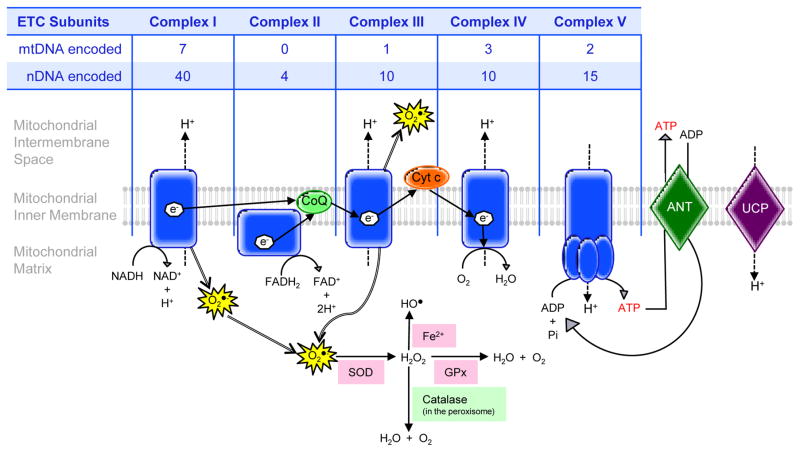Figure 1.
The four complexes of the ETC and ATP synthase are located in the inner mitochondrial membrane. Electrons from NADH and FADH2 are transferred from Complex I (NADH dehydrogenase) and Complex II (succinate dehydrogenase) to coenzyme Q (CoQ) before being transported to Complex III (cytochrome c reductase). From Complex III, cytochrome c (Cyt c) delivers the electrons to Complex IV (cytochrome c oxidase), which ultimately reduces oxygen to water. This flow of electrons down the ETC generates a proton electrochemical gradient, which is used by Complex V (ATP synthase) to synthesize ATP. ATP is then transported back into the intermembrane space by the ANT1-4 and beyond to the cytosol with a combination of ANT and VDAC. Protons can also enter the matrix through the uncoupling protein (UCP), which results in the uncoupling or separation of electron transport through the ETC from ATP synthesis. Premature electron leakage from Complexes I and II form ROS as superoxide (O2•−) which can be transformed into H2O2 or the hydroxyl radical (HO•). Subunits of each of the five complexes of the ETC, with the exception of Complex II, are encoded by both mtDNA and nDNA as recounted in the table.

